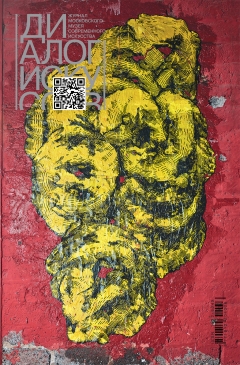Key figure in the history of British contemporary art Mat Collishaw is opening an exhibition in Gary Tatintsyan Gallery titled "ALBION" (until 28th April). Alexandra Rudyk talked to the artist about subject of him works, art strategy, Illusion and desire.
|
|
Alexandra Rudyk. Art turns to be a very expensive product now. It seems, many people from the industry have forgotten how and why they became the artists. Can you recall your personal reasons and circumstances?
Mat Collishaw. As a child I used to draw soldiers obsessively, then I drew footballers, then I drew rock bands. I finally realized that I wasn't good at any of these things, fighting, football or the guitar, but I could draw quite well. It became my way of escaping, creating a world that you could project yourself into.
A.R.You've participated in the legendary Freeze exhibition, which happened to be the turning point for the British and European art of the 1980s. If such exhibition opened now, what would you proclaim as the new art of the 2010s?
M.K.London is in a very different position to what it was in 1988, so you can’t really compare the impact an exhibition would have now, to what it had then. Although Freeze was well received, it’s notoriety has been mostly retrospective. Quite a few people saw it, but it gained much of it’s legendary momentum after it finished. There was a sense then that anything was possible and we had nothing to loose. Art in London was a very niche affair, some galleries still had carpet on the floor, now you can’t move for Artists and galleries. Because a lot of younger Artists were quite amateurish back then we decided to be relatively professional. The backlash to that has been that some younger Artists seem to prefer a faux amateur appearance, such is life.
A.R.Your artworks are beautiful but at the same time they can provoke unpleasant emotions, like your own artistic series Infectious Flowers. Is this shock a part of your art strategy? What kind of reaction do you expect from the spectators?
M.C. Cubism was considerd shocking because it abandoned traditional perspective, if people are used to a particluar perspective, then an alternative one can seem unsettling. My Infectious Flower works were origianaly taken from ideas I'd read in books by JK Huysman and Jean Genet, they provide an alternative moral perpective, one that inverted traditional moral reasoning. In Genet the debased became sublime. For a long time Art has perfomed this function, to step outside of accepted points of view. I've always tried to make my work as acessible as possible, a viewer may be unhappy with what I present, but they wouldn't have to read an incomprehensible text to have a view on it.
A.R.You do often refer to historical art styles and works of old masters. Why do you refer to the past in your works? How do you choose pieces for your cultural references?
M.C. The work I make is image based so it makes sense to draw on Art history and particularly the old masters who create arresting imagery that also carried meaning. I’m interested in the way that a particular style can make you look at something in a particular way. A Baroque painting of a man eating a sausage is going to be different to a Gothic depiction of the same subject. These style inform you in different ways, it’s part of the manipulative process of looking at an image of the world. Using 17th century Vanitas tropes to depict a cheeseburger in the Last Meal on Death Row series was a way to bring some gravity to a very mundane subject. You look at it differently to the picture you see of a cheeseburger behind the counter of a kebab shop.
A.R. Many works of yours are about the short moment between life and death and about death itself. Why are you interested in this subject?
M.C. It's always been a popular subject for painting, or was up until the 20th century. For some reason the crucifixion features far more than the resurection in Western Art, although the resurrection is the more extraordinary event. The last one hundred years have been more cerebral, less visceral. People still have to deal with grief and death though, and it shouldn't have to be experienced exclusively on news channels, Hollywood films and the internet.




